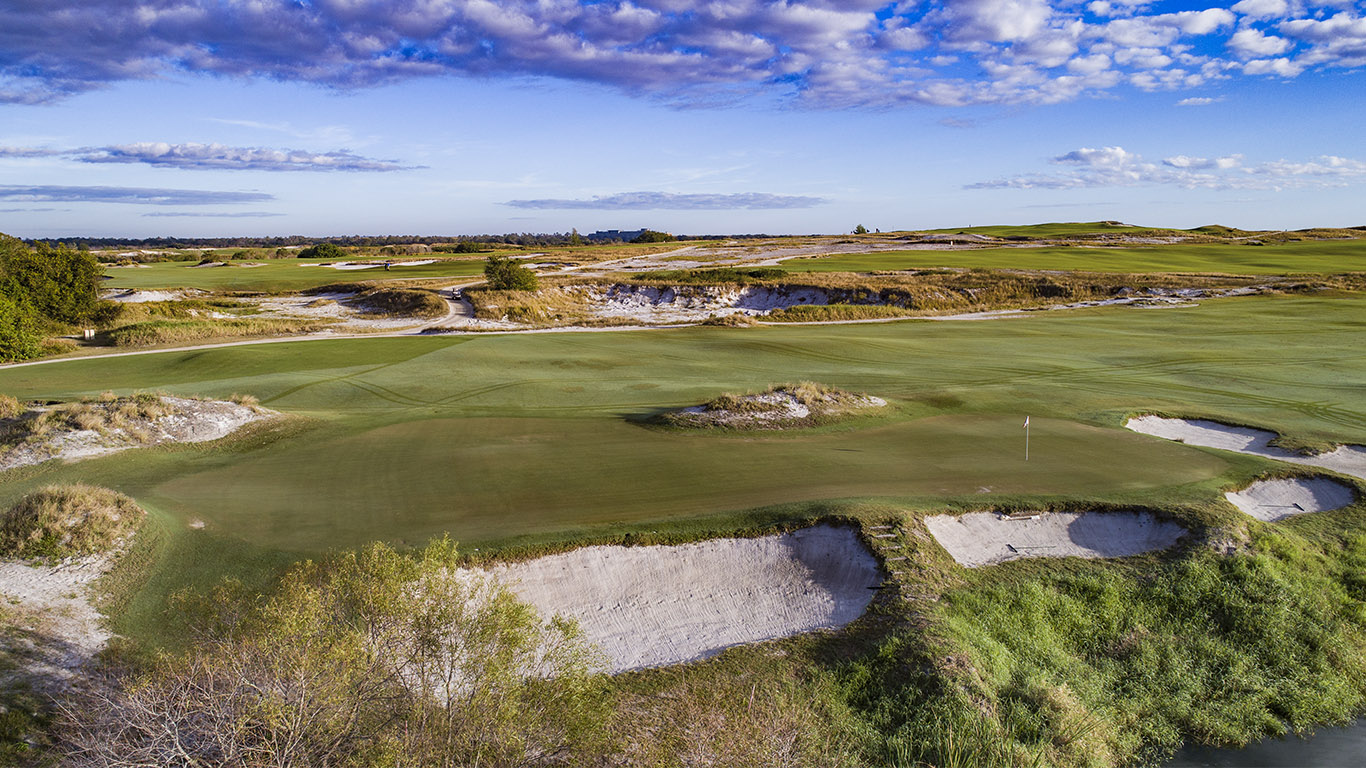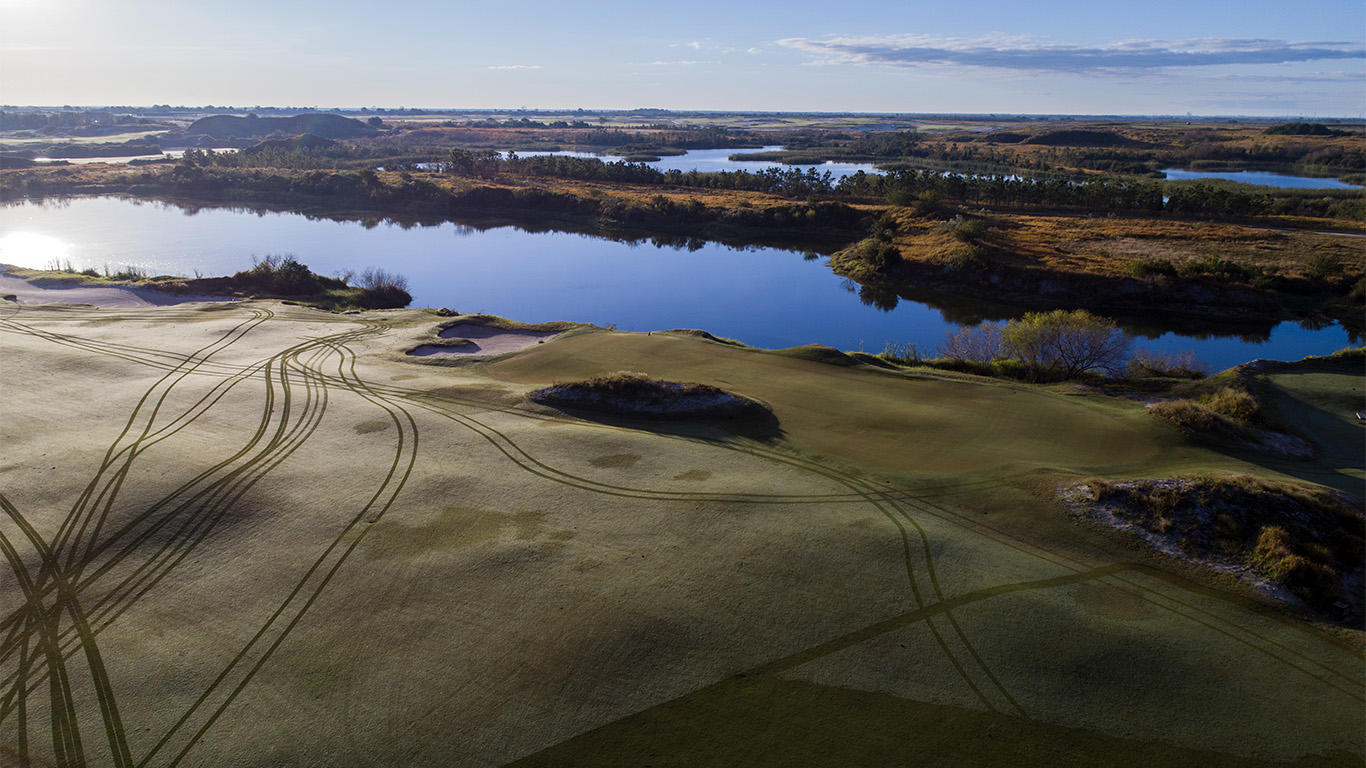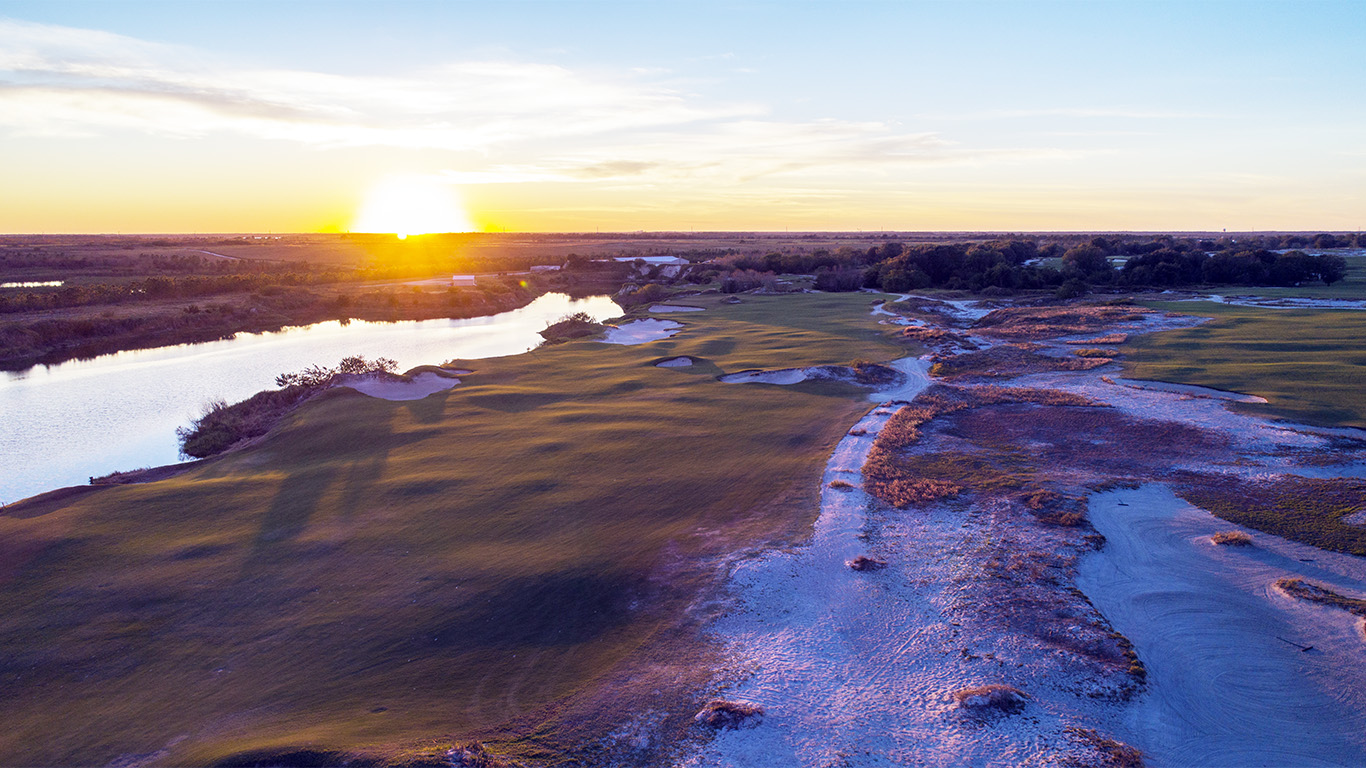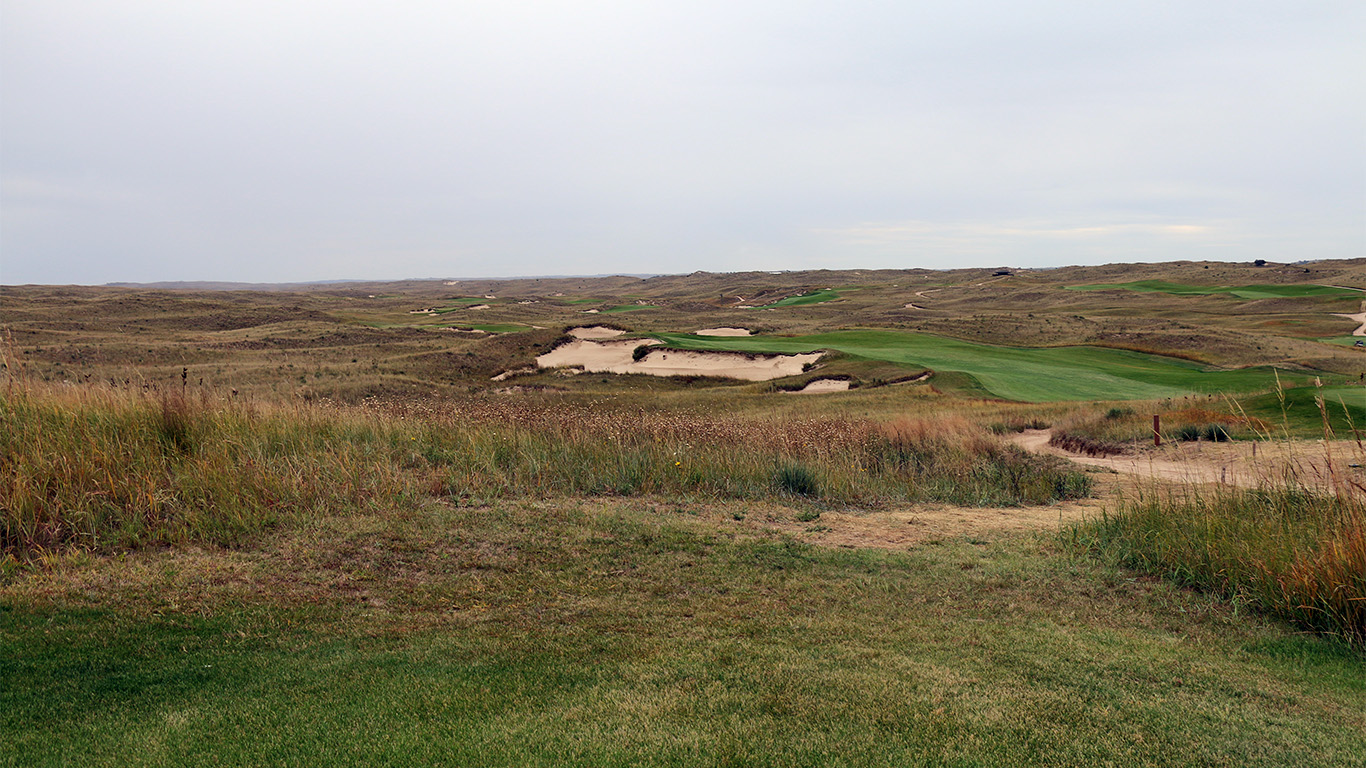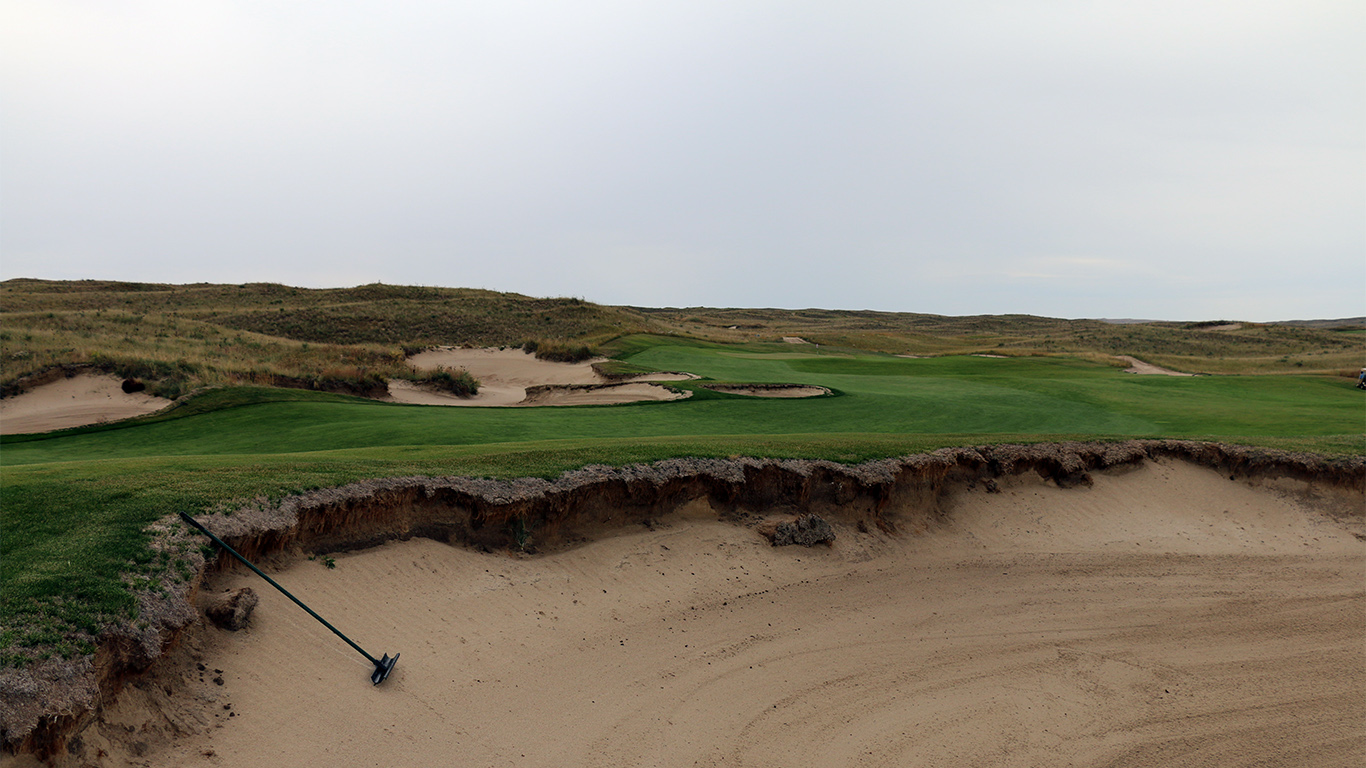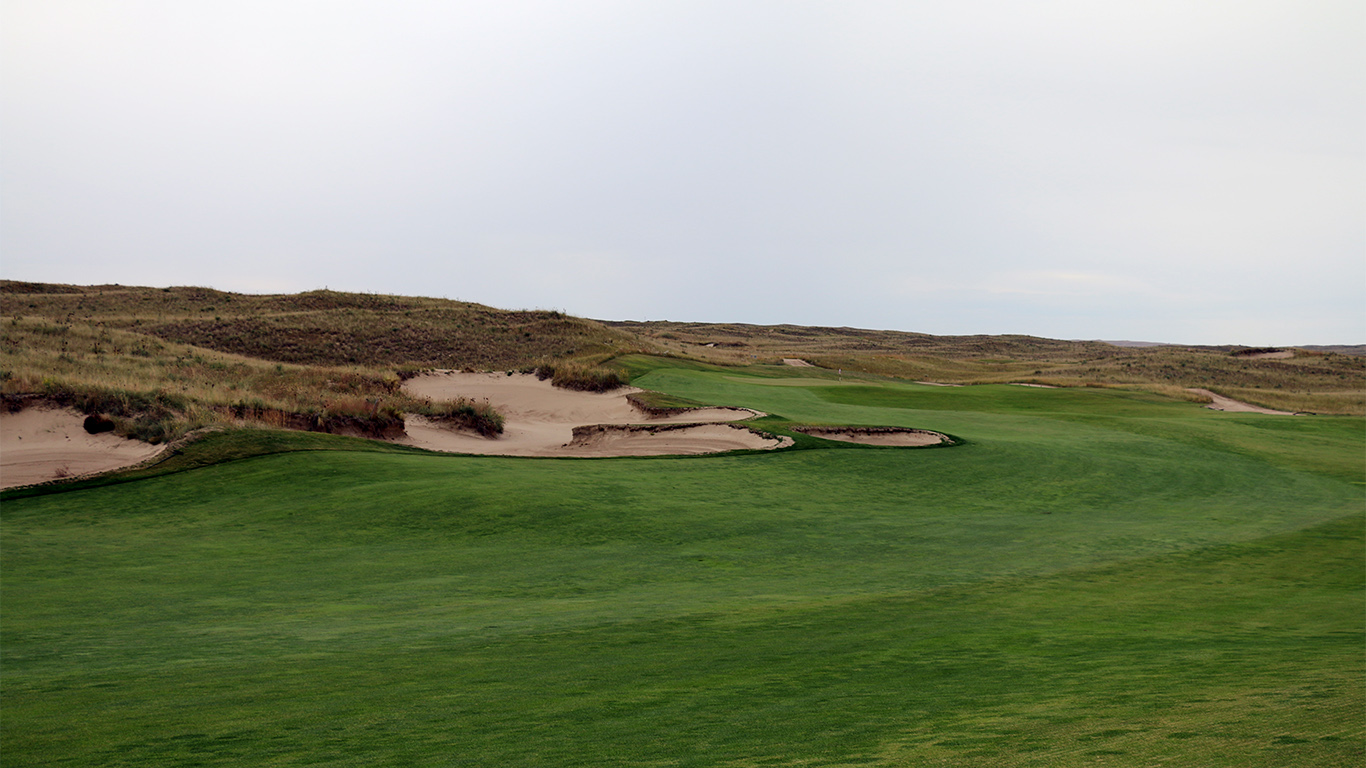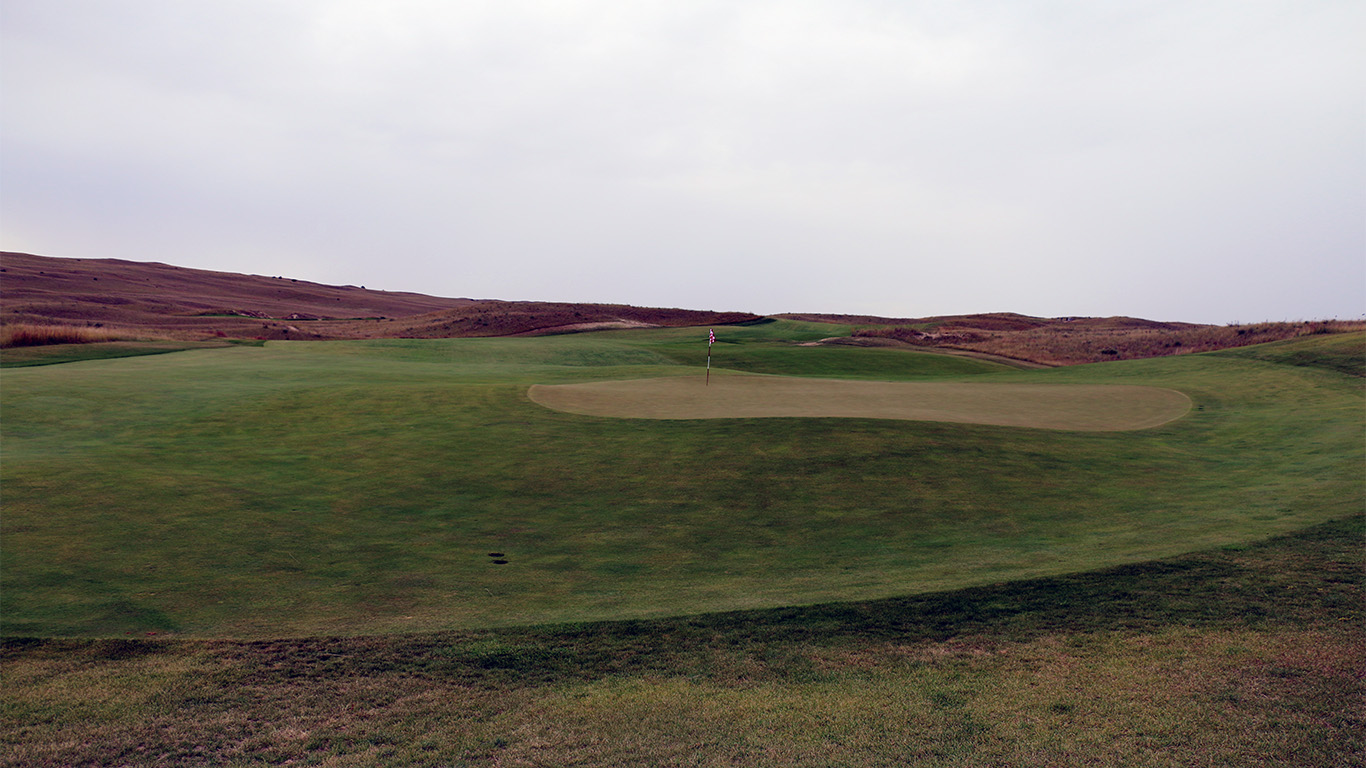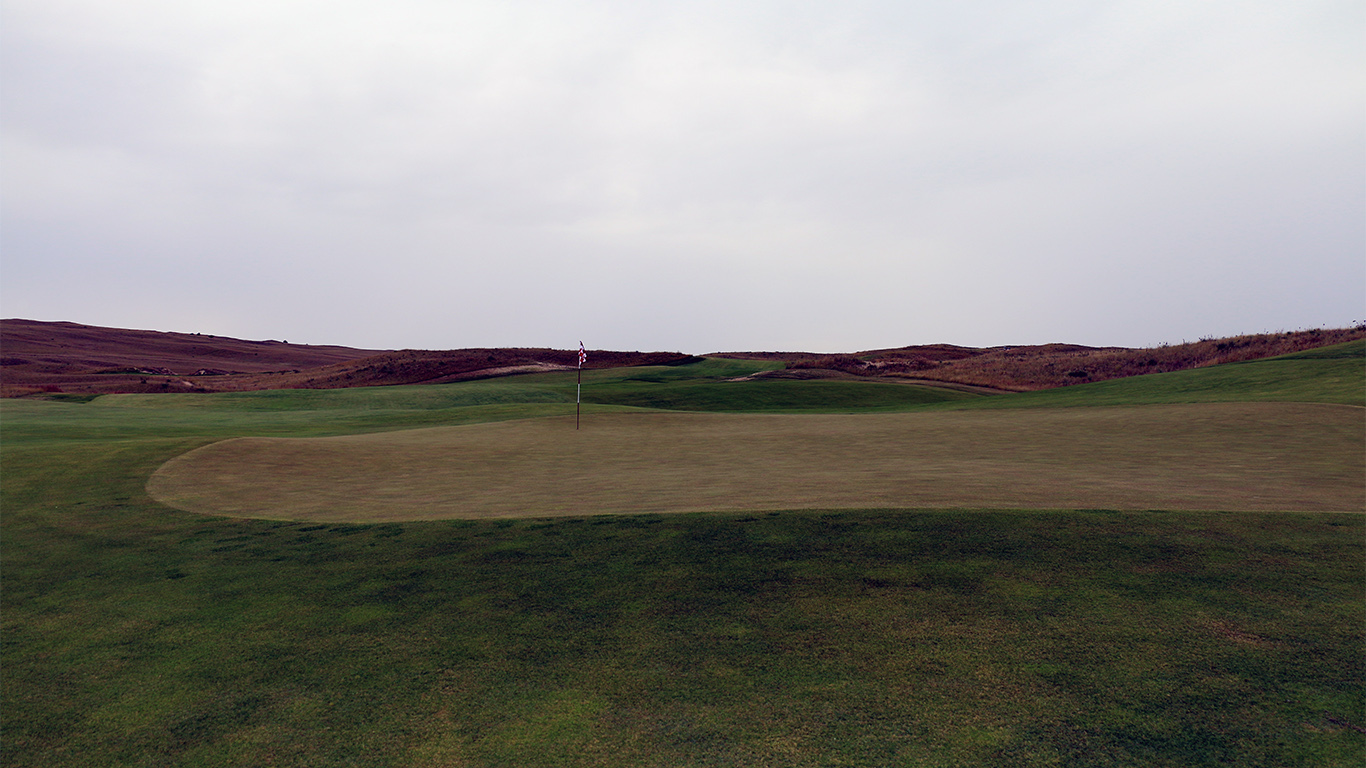Template holes were a staple of the famed Golden Age architects C. B. Macdonald, Seth Raynor, and Charles Banks. Designs such as the Redan, Alps, Eden, and others were modeled on the finest holes of the British Isles. These holes have grown in popularity over the years, and thanks to today’s digital age, golfers are identifying and understanding them more than ever.
While template holes are mostly associated with a few Golden Age architects, one of today’s greatest architecture teams, Bill Coore and Ben Crenshaw, have a par-5 design that pops up at a number of their courses. This week’s PGA Tour stop, Trinity Forest, gives us a look at that design on the 7th hole.
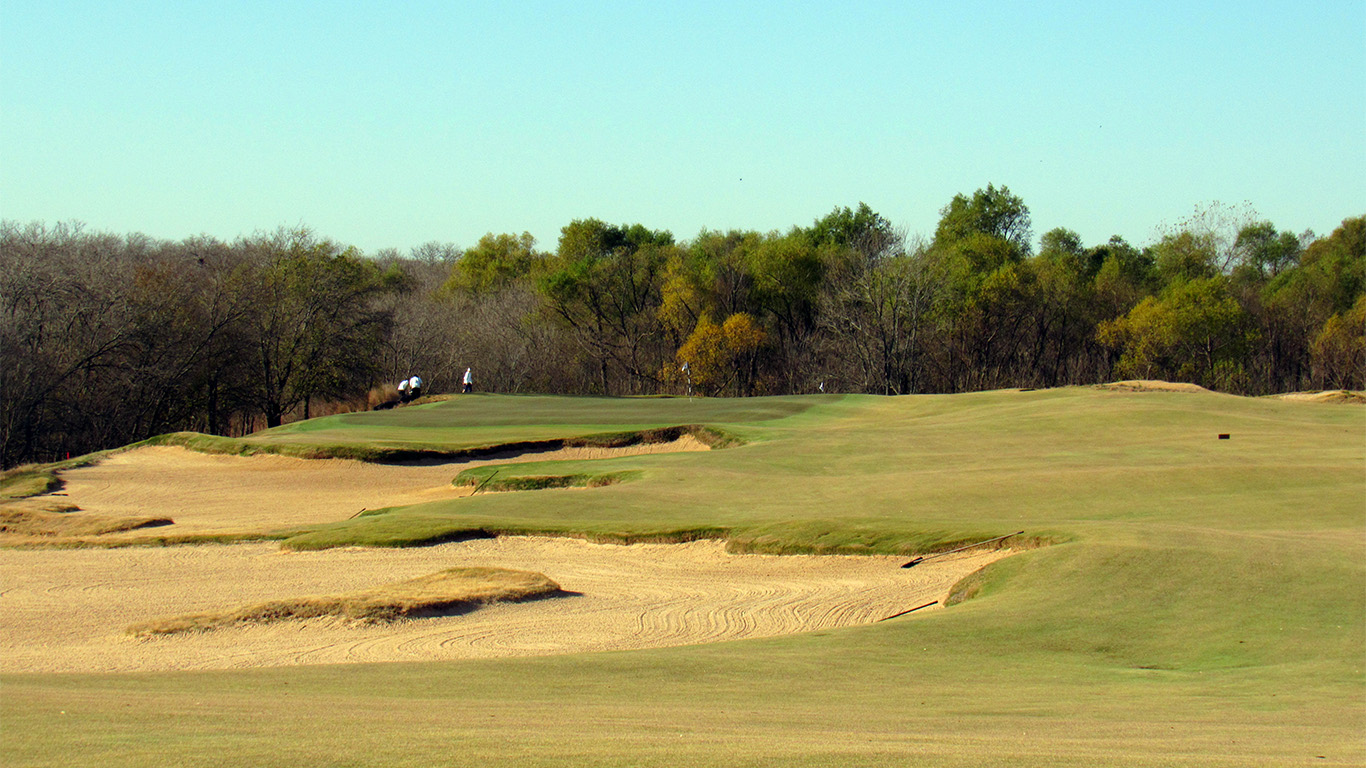
The 7th hole at Trinity Forest
This par 5 shows Coore & Crenshaw’s grasp of contours and strategy while also displaying arguably their greatest skill: restraint. While the 7th has a few well-placed bunkers, taking them away wouldn’t ruin the hole. That’s a tribute to the hole’s simple but effective use of a hazard line. To the left of the 7th runs the southern boundary of Trinity Forest’s property, so placing a drive up the left side comes with the risk of a penalty.
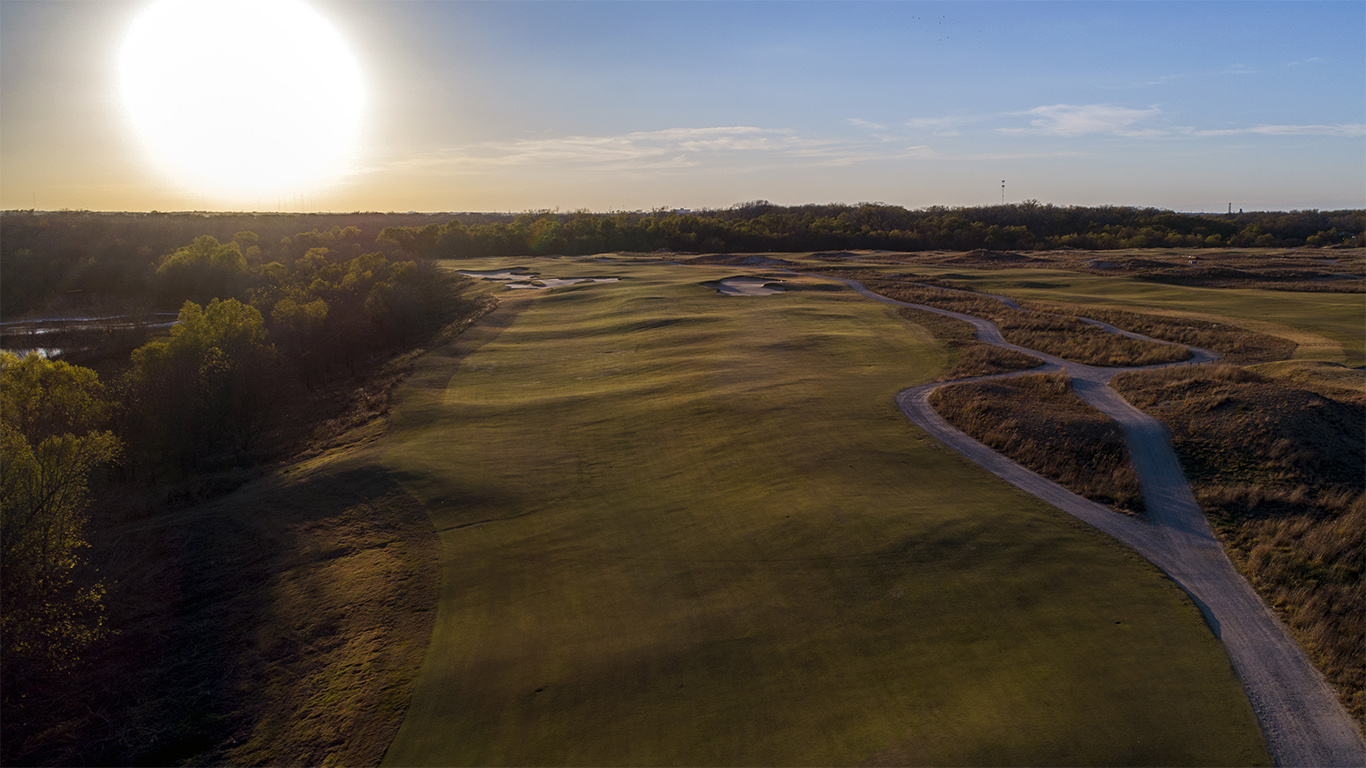
The tee shot at Trinity Forest's 7th hole
Coore & Crenshaw design the rest of the hole around this fact. Their long and narrow green complex pushes up against the property line and strongly favors an approach from the left half of the fairway. To accentuate the benefit of the bold play near the boundary, Coore & Crenshaw employ contouring on the right side of the green. These contours tend to aid approaches from the left, gathering them toward the pin positions. Approaches from the right, on the other hand, have to deal with contours that either repel shots short or propel them over the green.
-
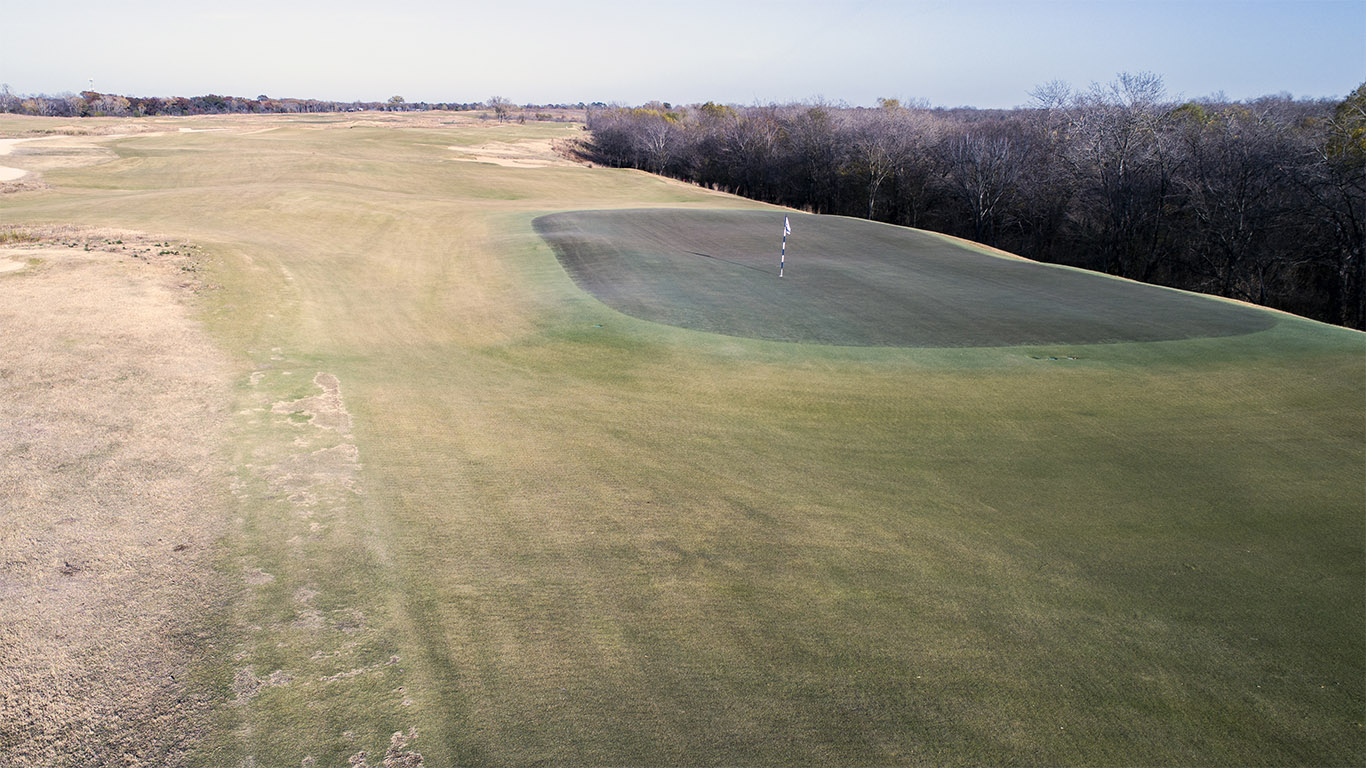
-
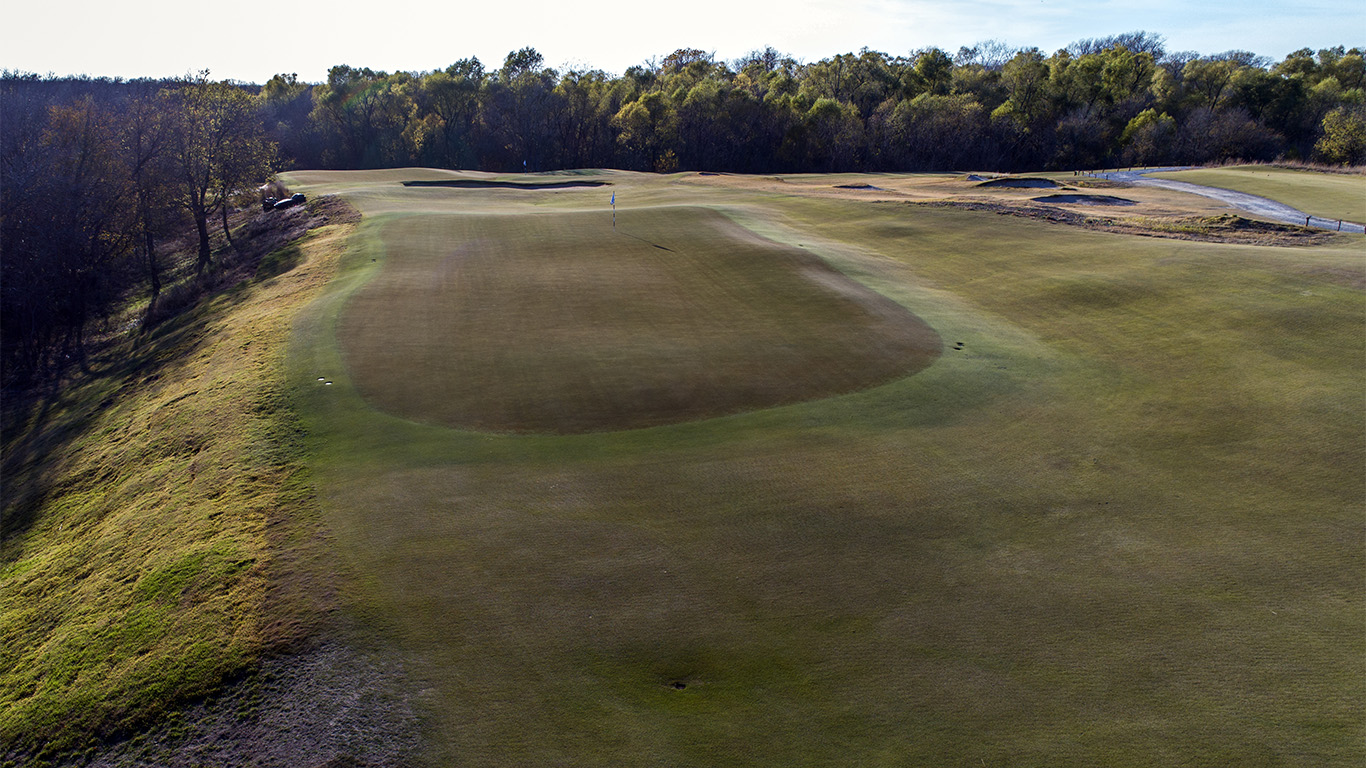
-
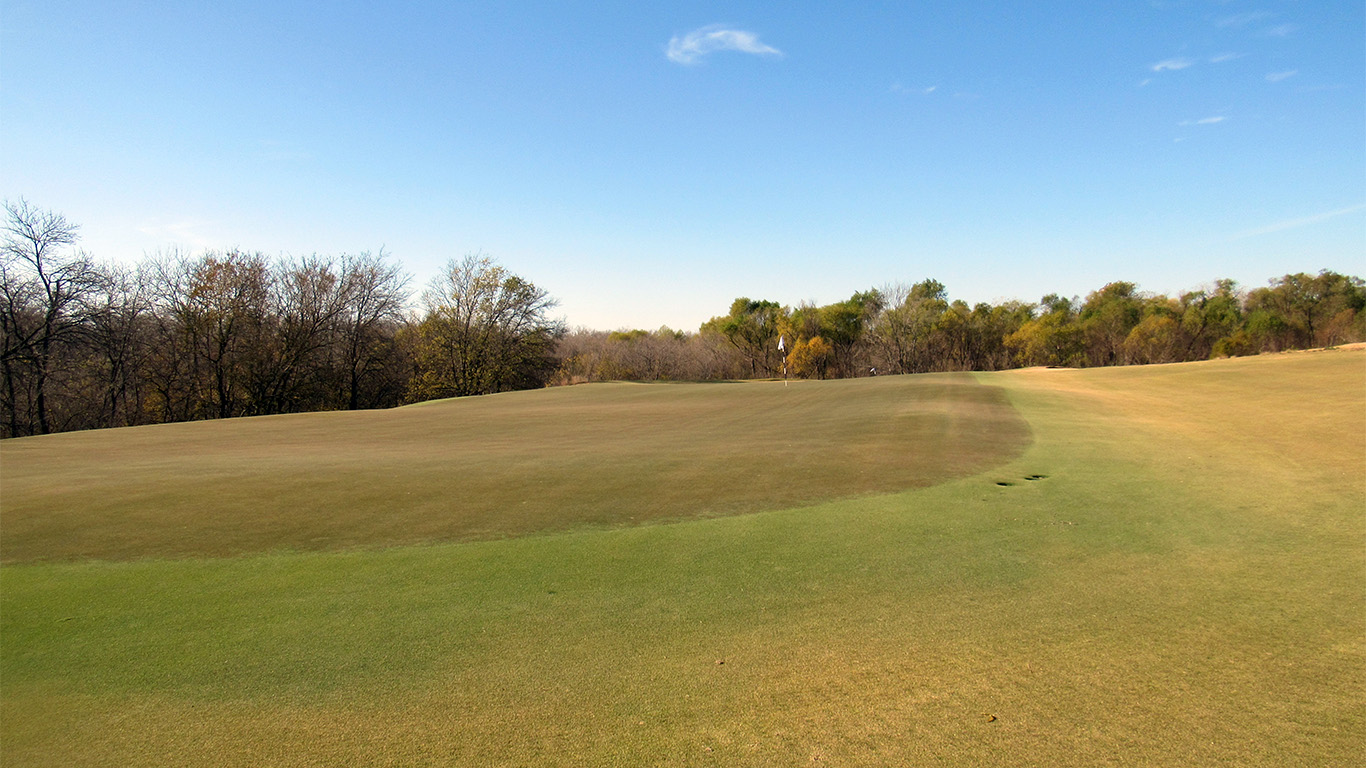
-
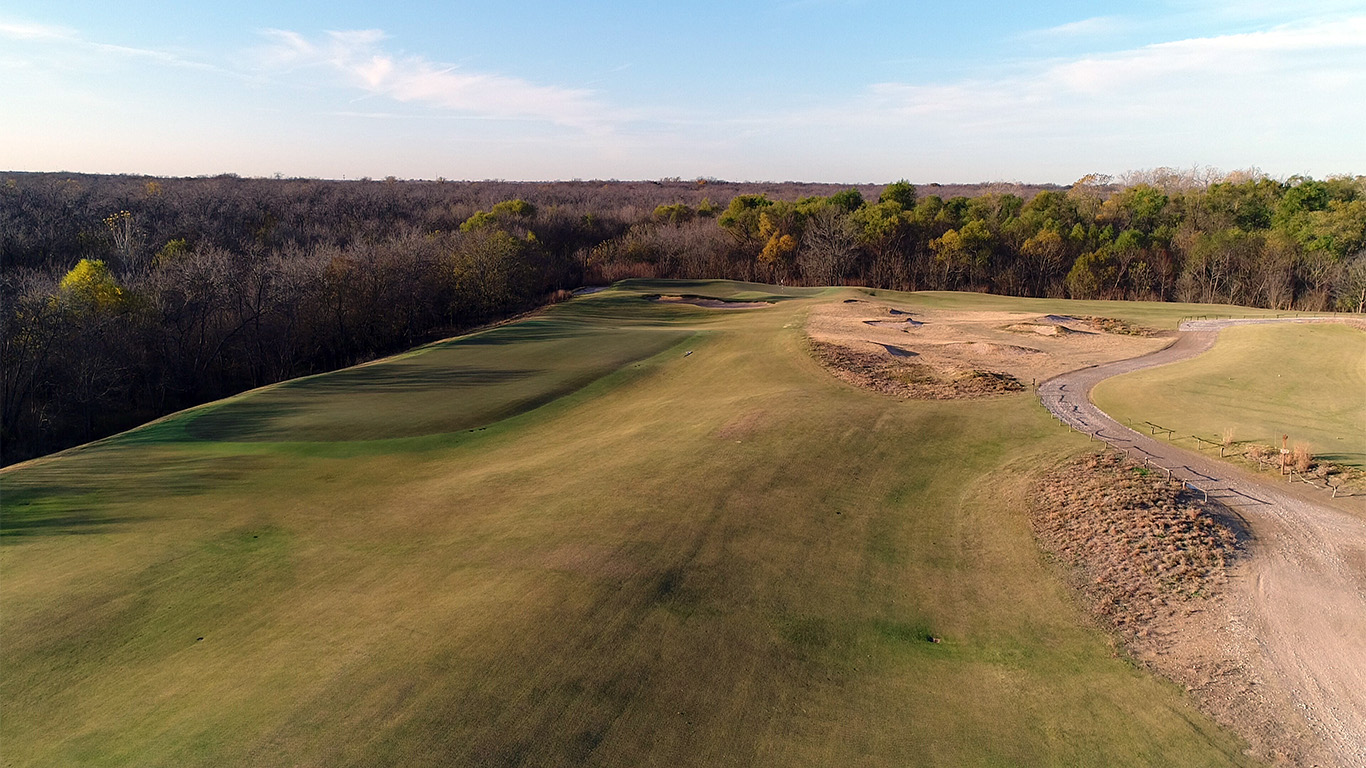
DCIM100MEDIADJI_0039.JPG
Overall, on the 7th hole, every yard away from the dangerous left edge of the fairway leads to a less advantageous angle and less helpful contours.
This strategy applies to those who attempt the green in two as well as to those who lay up. Just as flirting with the hazard on the left off the tee brings benefits, pressing close to the large fairway bunker in the layup area yields the best angle. Bailing right, either in going for it or in laying up, creates an awkward shot to a narrow green with severe contours and the edge of the property directly behind. Players can avoid the property line off the tee and on the second shot, but eventually they will have to take it on. Knowing this, Coore & Crenshaw ramp up the challenge the closer to the green that players get.
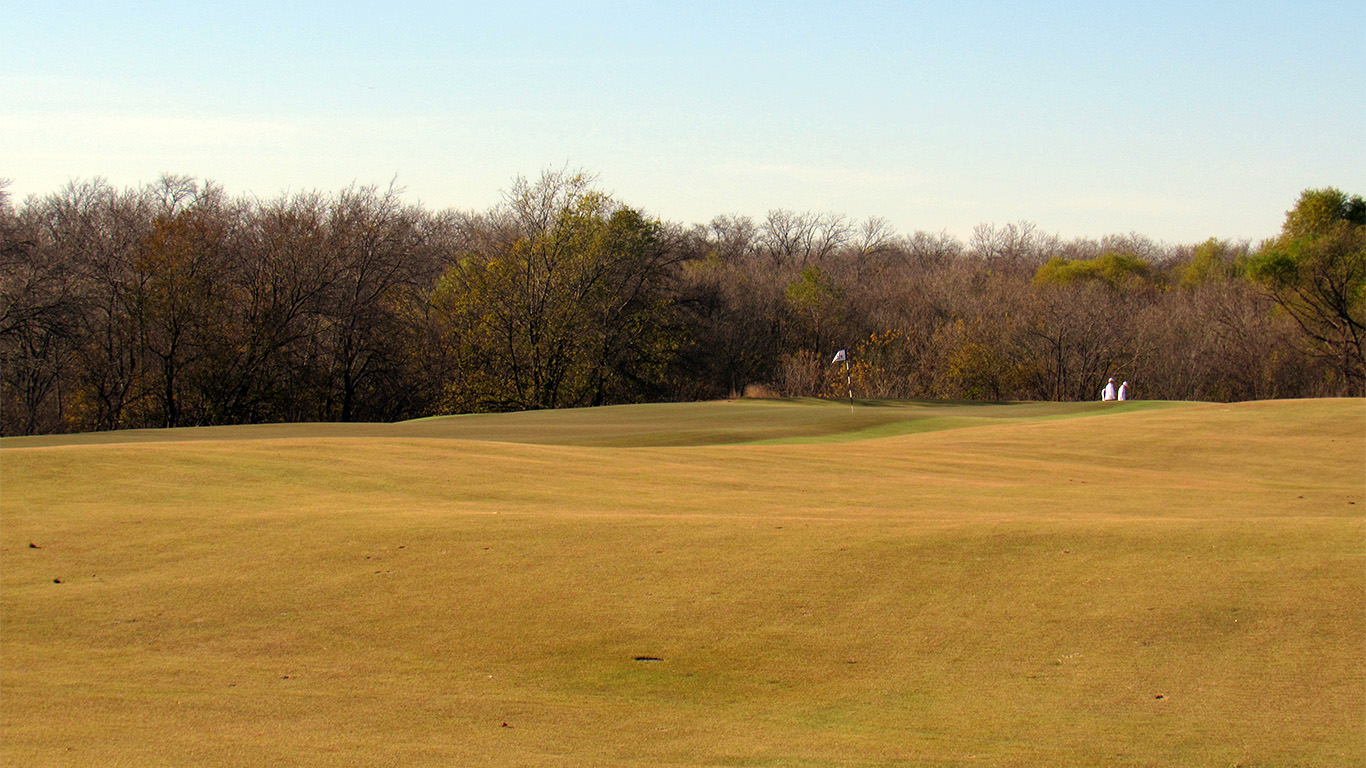
The awkward angle from short right of the 7th at Trinity Forest
The data
The 2018 AT&T Byron Nelson offers a small sample size but supports the hypothesis that players who find the left side earn a large advantage. Off the tee, it’s clear that players feared the left side. The shot distribution chart below shows heavy concentration of tee shots on right side of the fairway, toward the fairway bunker.
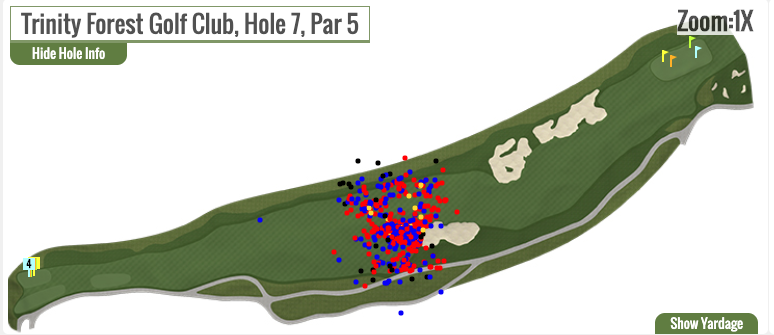
Tee-shot dispersion at the 2018 AT&T Byron Nelson
Nearly every player in the field attempted to get home in two, once again with the distribution favoring the right side, away from the property line.
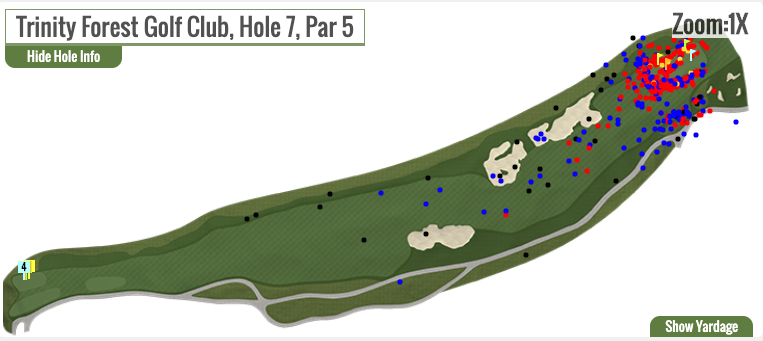
Second-shot dispersion from the 2018 Byron Nelson
In many cases, the longer hitters chose to lay back and right with less than driver rather than take on the left side. Looking at last year’s data, this decision resulted in a lower chance of an eagle (yellow) and a higher chance of double bogey or worse (black).
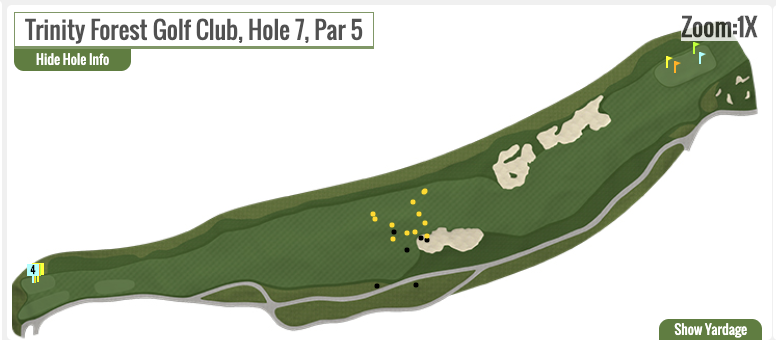
Tee-shot dispersion of best and worst scores at the 2018 Byron Nelson
The data shows that 75% of the eagles and none of the big numbers in last year’s tournament came from the left half of the fairway. While playing safe to the right took the hazard out of the equation off the tee, it brought into play the ground contours, a menacing but subtle hazard.
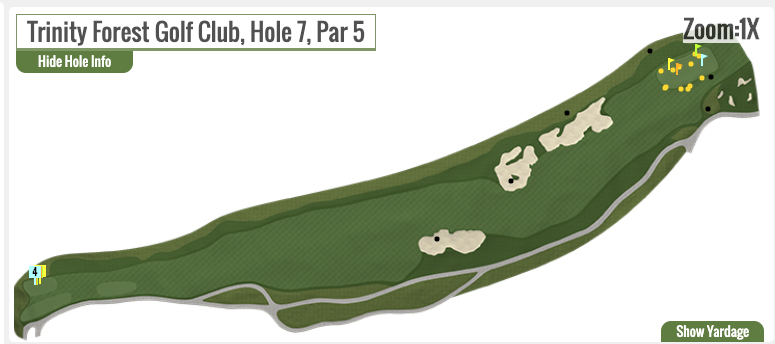
Other versions of the template
Streamsong Red – 7th
At the bustling mega-resort in central Florida, the Red course’s second par 5 plays along the water, which acts as the central hazard. Here you see a hole almost identical to the 7th at Trinity Forest, except Streamsong’s green is guarded by a distinct and menacing mound. While Trinity’s right side has more dramatic contouring, this mound can produce a lot of awkward positions and even sometimes take away access to the ground game.
Sand Hills Golf Club – 16th
Part of Coore & Crenshaw’s famed final stretch at Sand Hills, the 16th offers some of the most dramatic terrain of any hole in this style. The line of charm is up the left, but it’s fraught with the danger of a blowout bunker. The left side of the green borders the property line; the right side has just short grass and contours to defend it.
Talking Stick North Course – 2nd
The 2nd hole at this early Coore & Crenshaw design is on the least desirable site that the pair have ever worked on. The property line runs down the left side, and there is an expansive fairway to the right. At the green, two small bunkers guard the right side, bedevilling approaches from the safe layup spots.

The 2nd at Talking Stick's North Course
Hidden Creek Golf Club – 3rd
At this New Jersey Coore & Crenshaw design, the 3rd hole rewards players who lay up along the right side. Much like the 7th at Trinity Forest, a bunker complex guards the best angle for a third-shot wedge into the green.
-
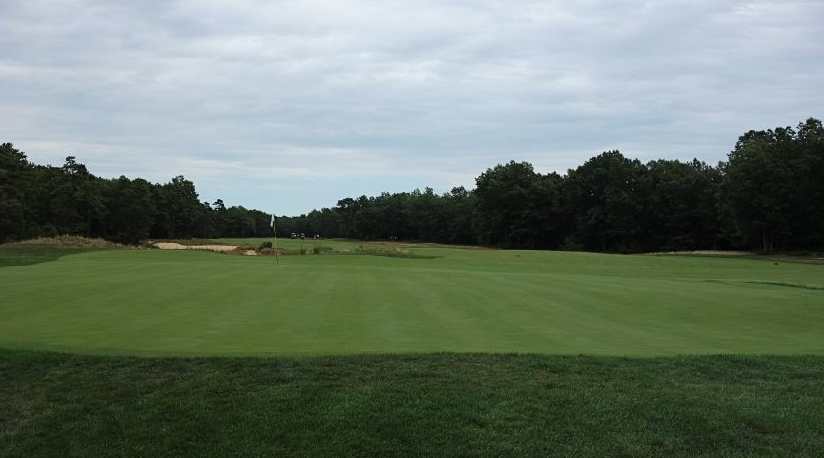
Behind the 3rd green at Hidden Creek Credit: Joe Bausch
-
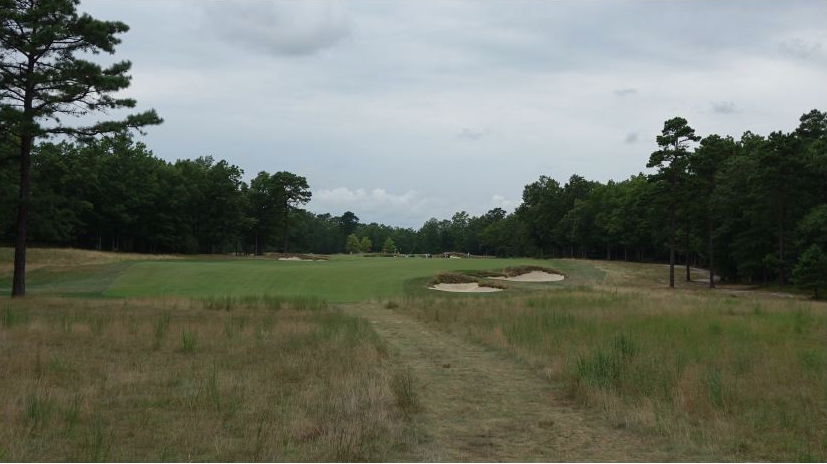
3rd tee shot at Hidden Creek Credit: Joe Bausch
-
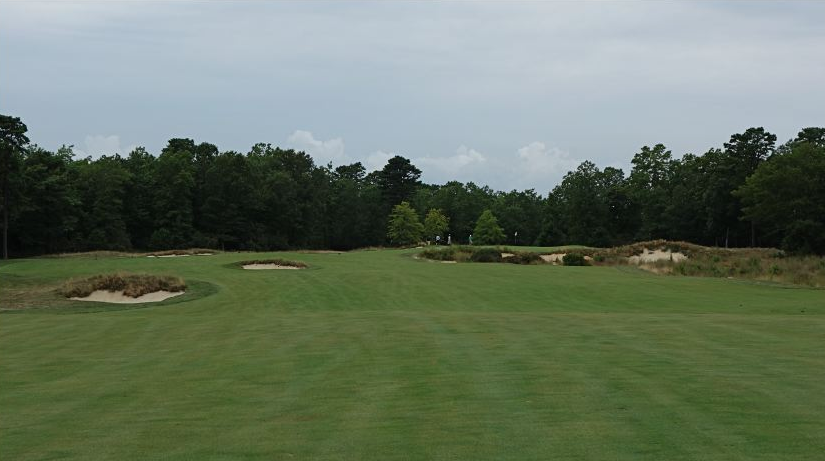
The 2nd shot at Hidden Creek Credit: Joe Bausch
Coore & Crenshaw have employed this strategic par-5 template at a number of their courses. It’s simple yet clever, and it doesn’t require notable topographical interest to produce a great hole. The design incentivizes players to take on more risk while making life difficult for those who play safe. Now it just needs a name…


 by
by 